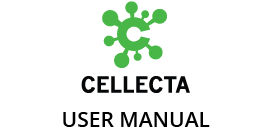| Observation | Possible Cause | Recommended Action |
|---|---|---|
| Yield of PCR products for DNA samples is low, but is good for Positive Control DNA sample — or — Low yield of PCR products for both experimental and Positive Control DNA samples |
Error in quantitation of input DNA, or DNA is degraded | Re-analyze the amount and quality of input DNA using Agilent Bioanalyzer, Agilent Fragment Analyzer, or Thermo Fisher NanoDrop. |
| DNA input is too low | Add more DNA, or increase target amplification cycles (Refer to PCR with Anchor Primers for cycle numbers recommended based on input amounts). | |
| RT step is not optimal | Please check for procedural mistakes. Make master mixes where possible. For individual reaction setups, make sure that the correct volume of RT-EXT Buffer and RT enzyme is added into each reaction. | |
| PCR cycling conditions are not optimal | Increase PCR amplification cycles. Ensure proper dispensing and mixing of viscous components at each step. |
| Observation | Possible Cause | Recommended Action |
|---|---|---|
| Low Cluster Density. | Inefficient purification from low molecular weight DNA products or low yield of PCR products | Re-purify PCR products using different technology (e.g. QIAGEN QIAquick PCR Purification Kit), and/or increase the concentration of pooled PCR products in the cluster generation step. |
| Observation | Possible Cause | Recommended Action |
|---|---|---|
| Yields of PCR products are significantly higher than Positive Control | Incorrect quantitation of input DNA amount | Re-analyze the amount and quality of input DNA using Agilent Bioanalyzer, Agilent Fragment Analyzer, or Thermo Fisher NanoDrop. |
| DNA input is too high | Add less DNA or decrease number of PCR cycles in the PCR with Indexed Primers step. | |
| Low fluorescence readings on Illumina sequencer — or — Lower than expected number of on-target reads — or — High mutation rate in the Index reads |
PCR primers from amplified indexed library quantification step (Quantify and Combine Samples for NGS) were not removed | Check that you added Primer Removal Master Mix in the Quantify and Combine Samples for NGS step. If it had been added, use a new vial of Primer Removal Reagent and repeat. |
| Lower than expected number of on-target reads | DNA input too low or PCR cycle number too low | Add more DNA or increase number of PCR cycles in target amplification step (PCR with Anchor Primers). |
| DNA is degraded | Use highest quality DNA possible. For degraded DNA, increase the number of PCR cycles. | |
| Uneven representation of Indexed Libraries | Inaccurate Indexed Library quantification | Check that you correctly calculate the molar concentration of each indexed library sample. |
| Inaccurate Indexed Library mixing | Re-quantify the indexed library samples and mix them in equimolar amounts. | |
| Inconsistent library yields from replicate DNA samples | Sample evaporation in thermal cycler | Seal 96-well plates well with an Adhesive Film Applicator and use a Compression Pad. Fill empty wells with water to minimize evaporation from experimental samples. |
Last modified:
24 January 2025
Need more help with this?
Contact Us

